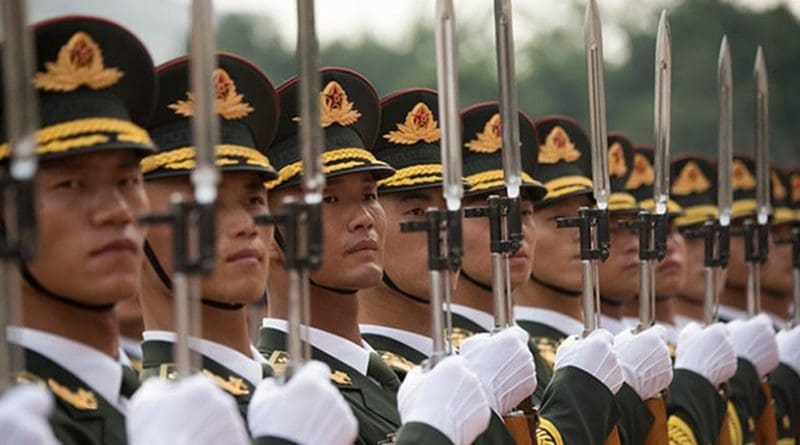Chinese Navy: From Coastal To Far Sea Defence – Analysis
By IPCS
By Cdr Sandeep Dewan
As part of fulfilling its aspirations of becoming a world power, China has embarked on the path of augmenting its ‘Comprehensive National Power’ through political, economic, military, technological and diplomatic means. China’s rapid rise as a regional political and economic power with global aspirations is an important element of the global strategic environment.
Towards achieving this ambition, the Chinese or the PLA Navy (PLAN) aims at a gradual extension of its strategic depth for offshore defensive operations and enhancing its capabilities in integrated maritime operations. The shift in strategy is necessary due to trade and energy security concerns. Ensuring that its Sea Lines of Communication (SLOCs) remain open, safe and secure at all times has become an even more important Chinese maritime interest. This becomes the basis of China extending its maritime defensive perimeter and consequently improving its ability to influence and protect initially regional and subsequently global SLOCs.
A flotilla of ten warships comprising two Sovremenny class guided missile destroyers, two Kilo Class submarines and three corvettes and auxiliaries transited from the East China Sea through the Okinawa Islands, Miyako Strait to the disputed Okinotori Islands. They conducted anti-submarine warfare exercises off the southernmost tip of Japan from 11 to 13 April 2010 without any prior notification to the coastal state. The exercise area and transit route are of strategic importance as this would be the most likely ingress route of a US Naval task force in case of a Chinese confrontation with Taiwan.
The Japanese sent two destroyers to monitor the Chinese flotilla and were instantly buzzed by a Chinese helicopter that reportedly flew too close to the Japanese warships. Reacting to the subsequently lodged Japanese diplomatic protest, the Chinese foreign office stated that training in international waters was an international practice and further added that other parties should not over speculate into the flotilla’s intentions.
According to the Global Times, the deployment of and the route taken by the Chinese Flotilla seems to be in consonance with a three-stage strategy in the PLA Navy’s modernization plans as indicated in the White Paper on China’s National Defence. The Navy has been developing capabilities of conducting cooperation in distant waters and countering non-traditional security threats in order to progress the overall transformation of the service in consonance with its new strategy of far sea defence with long range capabilities.
Through its three-staged strategic transformation, the PLAN aims to further develop into a technologically modernized and networked naval force capable of operating within the first island chain comprising islands that stretch from Japan to the North, to Taiwan and the Philippines in the South. The second stage aims to transform the PLAN into a regional naval force that can operate beyond the first island chain to reach the second island chain that includes Guam, Indonesia and Australia. Finally in the third stage, the PLAN seeks to transform itself into a global force capable of true blue water operations by the middle of the 21st century.
The overall plan reflects the PLAN’s growing sense of self confidence and increasing willingness to assert its interests abroad much beyond the hitherto operations in and around the South and East China Seas. When viewed in the context of its naval strategy, the success of the recent PLAN exercise demonstrates the enhanced capabilities of the Navy which is progressing its operations further outwards of the first island chain to the second island chain and beyond. The point of interest here is that this zone significantly overlaps with the United States Navy’s area of supremacy. This could well signal the end of the era of dominant world powers enjoying unshared spheres of influence. It has also caused concern not only amongst the Americans, but amongst certain Southeast Asian regional nations as well. This could as well signal a Chinese design to challenge the freedom of action of the various maritime players in the region and has certainly altered the maritime security calculus in the Western Pacific.
The PLAN seems to have finally come of age. Modernization apart, it has come to realize that naval power is more benign than land power. Navies by themselves cannot occupy or fortify areas at sea and thus must do far more than just fight. They need to protect not only trade and energy supplies, but also secure the routes and vessels that transit the same.
Cdr Sandeep Dewan is a Research Fellow at United Service Institute of India and may be reached at [email protected]. This article was published by IPCS.

